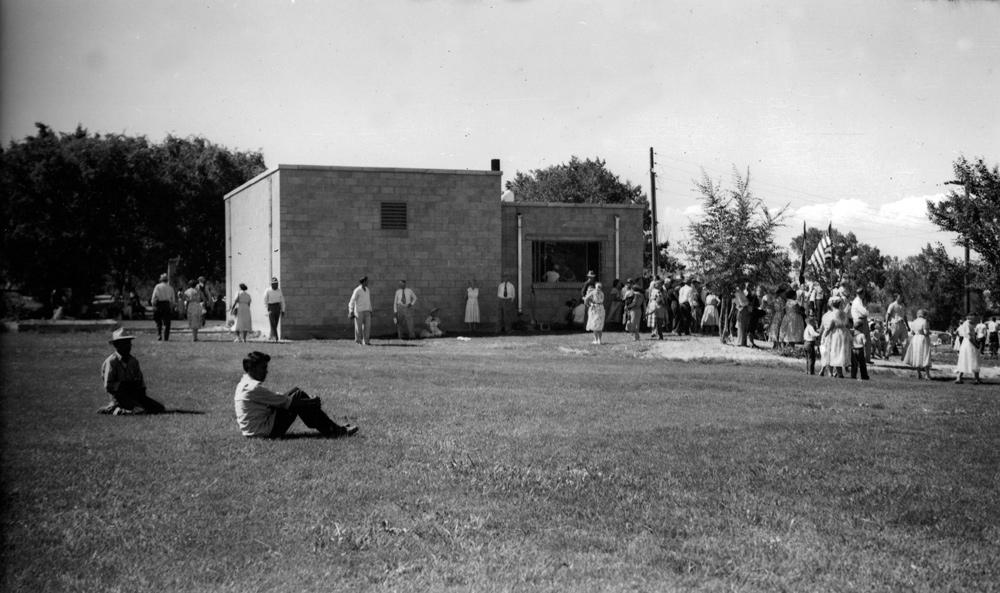Ute Indian Museum
Full Article
The Ute people, or as they call themselves, Nuche (The People), are Colorado’s longest continuous residents. Their rich cultural heritage and history is on display at the Ute Indian Museum. Nestled in the heart of traditional Uncompahgre Ute territory in Montrose, the Ute Indian Museum is History Colorado’s only facility in western Colorado. It is also a State Historic Monument and is listed on the National Register of Historic Places. The Ute Indian Museum occupies a little less than nine acres, where the Ute Chief Ouray and his wife, Chipeta, lived.
Ute History
Long before white immigrants arrived, Colorado’s mountains and canyon lands belonged to the Utes. The Ute Nation was transformed when the horse became an integral part of its culture in the seventeenth century. Today there are three Ute tribes: the Southern Utes and Ute Mountain Utes in southern Colorado and the Ute Indian Tribe of the Uintah and Ouray Reservation in Utah.
Ute culture is resourceful and creative, using local plants and animals in sustainable and respectful ways. For hundreds of years Utes thrived in Colorado, living in mountains during the summer and moving to river valleys in the winter. This changed when they encountered a European migration that overtook and displaced them.
In 1849, a year after Mexico’s defeat in the Mexican-American War, the first official treaty between the Utes and the United States was negotiated at Abiquiú, New Mexico. The Calhoun Treaty, as it was known, resulted in the establishment of an Indian agency at Taos, New Mexico. In the decades that followed, a series of treaties and agreements restricted the Utes to increasingly smaller tracts of land until the current reservations were established in the late nineteenth century. The reduction of Ute territory led to multiple violent incidents, such as the Meeker Incident of 1879 and the Beaver Creek Massacre of 1885.
Museum
The landscape around the Ute Indian Museum has been heavily modified from its original native state. This process began in 1875, when the federal government gave Ouray and Chipeta about 500 acres as a farm and ranch. After Chipeta’s death in 1924, the transformation of a small portion of their farm into the museum grounds began with the construction of Chipeta’s crypt. Then, in 1926 the obelisk commemorating Chief Ouray was erected, and the gravesite of Chief John McCook (Chipeta’s brother) followed in 1937.
The museum opened in 1956 and expanded in the early 1960s to include additional exhibit space and a terrace. Below the road to the museum, the Dominguez-Escalante Expedition monument was built as part of the bicentennial celebration in 1976. To the north of this monument, the native gardens and walkway were built in 1988–90. The walkway extends northeast on an elevated boardwalk through wetlands to the southwest bank of the Uncompahgre River.
A newly expanded museum was built in 2017. With the collaboration of the three Ute tribes, traditional stories and oral histories are now tightly woven into the permanent exhibit space. Throughout the exhibits, visitors journey to iconic places across Colorado to learn the story of Ute life, history, and culture. Told in the voices of tribal members, the exhibits include contemporary views of Ute life, including cultural survival, political self-determination, economic opportunity, and the celebration of the Bear Dance. There are approximately 200 artifacts on exhibit, including a headdress from Buckskin Charley (Sapiah), a velvet dress belonging to Chipeta, a robe that belonged to Ignacio, and one of Ouray’s shirts. The museum also includes a changing gallery, a gift shop, a patio with stunning views, shady picnic areas, and tipis.


















